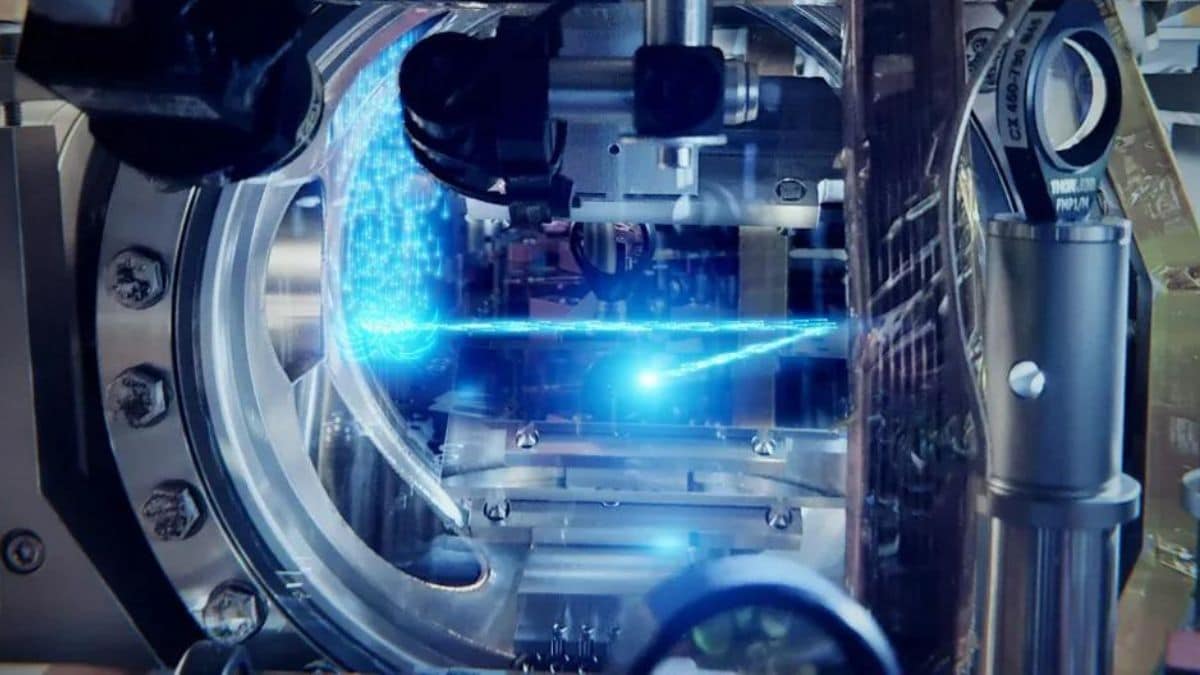Physicists Successfully Develop Atom Laser That Can Stay On Forever
Using the BEC, scientists could create the pulsed variant of the atom lasers but failed to make the continuous one for 25 years.
- Physicists from University of Amsterdam recently developed an atom laser
- It works on the concept of the Bose-Einstein Condensate (BEC)
- Physicists have devised a way to create eternal matter waves

Physicists have devised a way to create eternal matter waves
Photo Credit: UvA
A team of physicists from the University of Amsterdam has recently developed an atom laser that can last forever. Inside a commonly used laser such as in measuring devices and CD players, all the light vibrates in sync. When it comes to an atom laser, it works on the concept of the Bose-Einstein Condensate (BEC). The condensate was created in labs around 25 years ago and enabled scientists to make atom lasers that could emit beams of matter. However, the lasers could be operated only for a short time as the laser required a new BEC after sending out matter pulse.
But now, in the new study published in Nature, physicists have devised a way to create eternal matter waves. Elementary particles in nature occur in two types namely bosons and fermions. While fermions are hard in nature, bosons are soft and can move through each other with ease. Photon, the smallest possible quantity of light, is one such example of a boson. Bosons have a special character due to which they can condense in a coherent wave. The resultant condensation of matter particles is termed Bose-Einstein Condensate.
Using the BEC, scientists could create the pulsed variant of the atom lasers, but failed to make the continuous one for 25 years.
BECs are fragile by nature and get destroyed when light falls on them. But, light is also required in the formation of the condensate. Due to this, BECs could only be made in fleeting bursts. This long-standing problem was solved in the new study. “In previous experiments, the gradual cooling of atoms was all done in one place. In our setup, we decided to spread the cooling steps, not over time, but in space: we make the atoms move while they progress through consecutive cooling steps,” explained team leader Florian Schreck.
Schreck added that the ultracold atoms arrive at the heart of the experiment at the end where they can be used to make coherent matter waves in a BEC. He highlighted that while the atoms are in use, new atoms take their place and replenish the BEC. “In this way, we can keep the process going – essentially forever,” Schreck said.
Now, researchers are aiming to create not only continuous, but also a stable beam of atoms so that it can be used in various applications.
For the latest tech news and reviews, follow Gadgets 360 on X, Facebook, WhatsApp, Threads and Google News. For the latest videos on gadgets and tech, subscribe to our YouTube channel. If you want to know everything about top influencers, follow our in-house Who'sThat360 on Instagram and YouTube.
